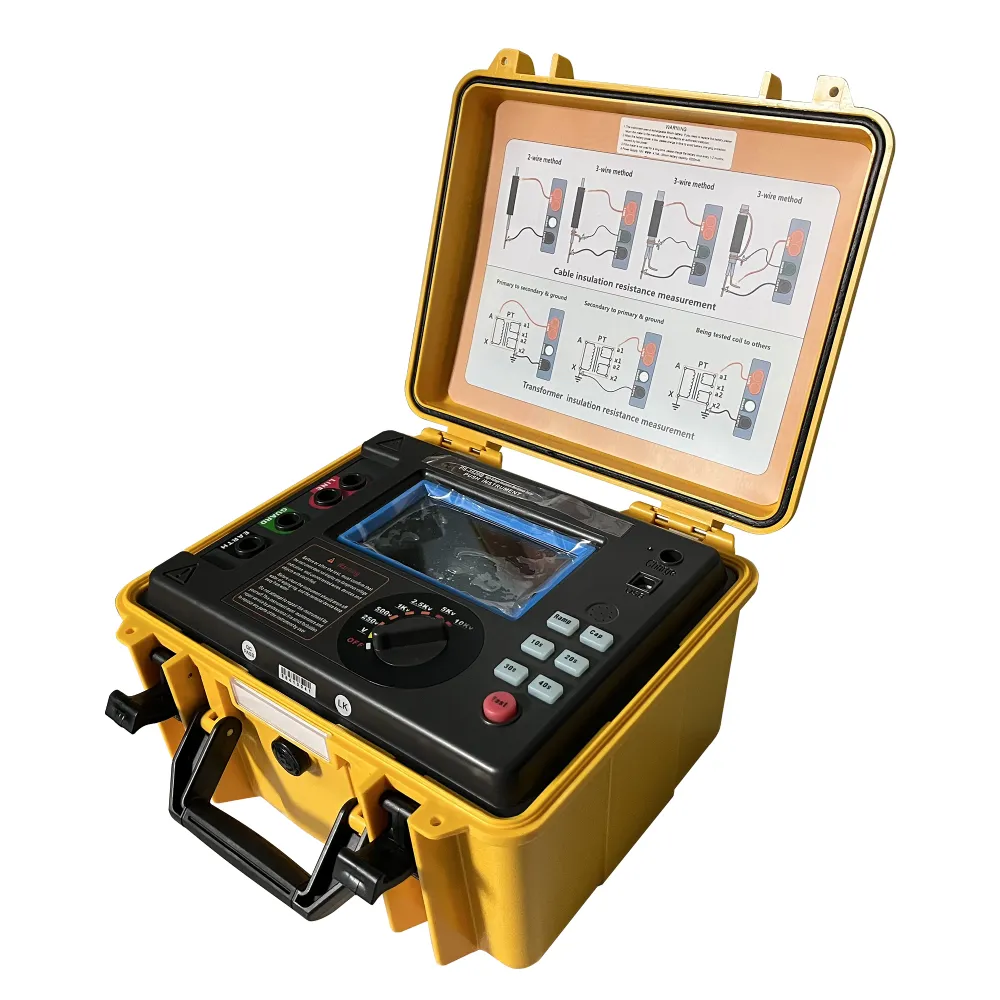 English
English


Understanding the Functionality and Applications of a Resistivity Measurement Device for Accurate Testing
Understanding the Importance of a Resistivity Tester
In the fields of geophysics, environmental science, and electrical engineering, measuring electrical resistivity is crucial for understanding various subsurface and material properties. At the heart of this measurement process lies the resistivity tester, an indispensable tool that offers valuable insights for research, construction, and environmental assessment.
What is Resistivity?
Electrical resistivity is a fundamental property of materials that defines how strongly they resist the flow of electric current. Unlike conductivity, which measures how easily electric current flows through a material, resistivity provides a more nuanced understanding of a material's ability to impede current flow. It's influenced by factors such as temperature, moisture content, and the chemical composition of the material.
The Working Principle of a Resistivity Tester
A resistivity tester typically operates by sending an electrical current through a pair of electrodes placed within a material or the ground. As current passes through, the tester measures the voltage drop across another pair of electrodes. By applying Ohm's Law (Voltage = Current x Resistance), it can calculate the resistivity of the material using the geometric configuration of the electrodes.
Different configurations can provide different types of information. For instance, the Wenner configuration uses four equally spaced electrodes to measure resistivity in a uniform medium, while the Schlumberger array is often used for greater depth measurement. Each method has its specific applications depending on the nature of the investigation or the type of material being tested.
Applications of Resistivity Testing
1. Geotechnical Engineering In construction, understanding the resistivity of soil and rock is critical for designing stable foundations. High resistivity often indicates dry, solid ground, while low resistivity might suggest saturated or loose materials, which can affect the structural integrity of buildings and infrastructures.
resistivity tester

2. Environmental Studies Resistivity testing is widely used in environmental monitoring to detect pollutants in soil and groundwater. Contaminants often change the resistivity of materials, and by creating resistivity maps of an area, scientists can identify contamination hotspots without extensive excavation.
3. Archaeology Archaeologists utilize resistivity testers to locate buried structures and artifacts. Different materials (soil, stone, metal) have varying resistivity, making it possible to map out sites and inform excavation strategies while preserving the integrity of potential finds.
4. Oil and Gas Exploration In the energy sector, understanding the resistivity of geological formations can indicate the presence of hydrocarbons. Resistivity readings can help in identifying productive zones and optimizing drilling locations.
Advantages of Using a Resistivity Tester
One of the primary benefits of using a resistivity tester is its non-destructive nature. Tests can be conducted without altering the material or environment, making it an ideal choice for various applications. Additionally, advancements in technology have led to portable and user-friendly devices that can provide real-time data, enhancing fieldwork efficiency.
Moreover, resistivity testing is cost-effective compared to other subsurface exploration techniques such as drilling or coring. By providing a preliminary understanding of subsurface conditions, resistivity testing can significantly reduce project costs and risks.
Conclusion
The resistivity tester is an essential instrument across multiple disciplines, providing critical data that informs decision-making and planning. As technology continues to evolve, the efficiency and accuracy of resistivity testing will likely improve, paving the way for even broader applications in science and industry. Whether in environmental assessments, construction projects, or archaeological explorations, the resistivity tester stands as a vital tool in our quest to understand the materials that make up our world.
-
Differences between open cup flash point tester and closed cup flash point testerNewsOct.31,2024
-
The Reliable Load Tap ChangerNewsOct.23,2024
-
The Essential Guide to Hipot TestersNewsOct.23,2024
-
The Digital Insulation TesterNewsOct.23,2024
-
The Best Earth Loop Impedance Tester for SaleNewsOct.23,2024
-
Tan Delta Tester--The Essential Tool for Electrical Insulation TestingNewsOct.23,2024





